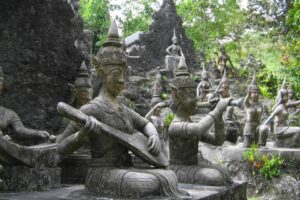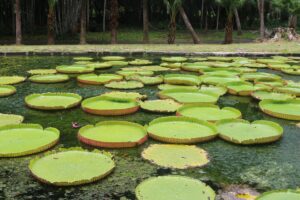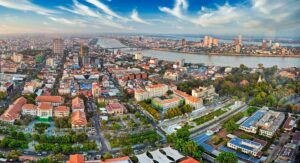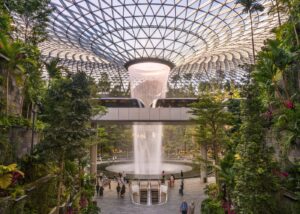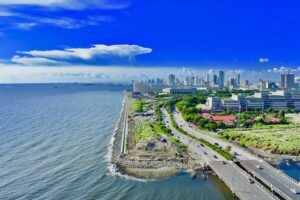In the Philippine capital – Manila on Andres Bonifacio Avenue there is an unusually cheerful cemetery where people live. Here it is known as Cementerio del Norte. Children of the local population run and laugh among the graves, couples in love walk, young mothers teach their babies to take their first steps, and housewives busily carry baskets of food home from the stores: life goes on as usual.
You can book your Manila airport transfer to or from your hotel here.
No one will tell you the exact statistics of people living among the silent tombstones. They say there are at least ten thousand of them. And the cemetery town itself in the Philippines has been around for a long time. Here you can find 60-year-old residents who were born and have lived in the cemetery all their lives.

Features of the cemetery
The Cemetery City in Manila has long been mentioned in tourist guides. The Northern Pogost appeared on the outskirts of the capital in 1904, and over the past century it has become a miniature town. Its buildings are stone vaults with richly carved and stuccoed facades. The funerary structures, densely scattered over an area of 54 hectares, formed streets and alleys, front avenues and blind alleys.
A cemetery in the Philippines is home to homeless people who cannot pay their rent in the city. The most active settlers found work here and even opened their own business. Some moonlight as informal guides, giving tourists individual tours to the most beautiful mausoleums, where prominent people are buried.
At the same time, they are able to tell a fascinating story about the lives and activities of the deceased, who made a worthy contribution to the development of the country. Others keep the cemetery toilets clean and charge a fee to visit the restrooms. There are communities here that serve mini stores, their own kiosks with drinks and snacks, there is an Internet cafe with paid access to Wi-Fi.
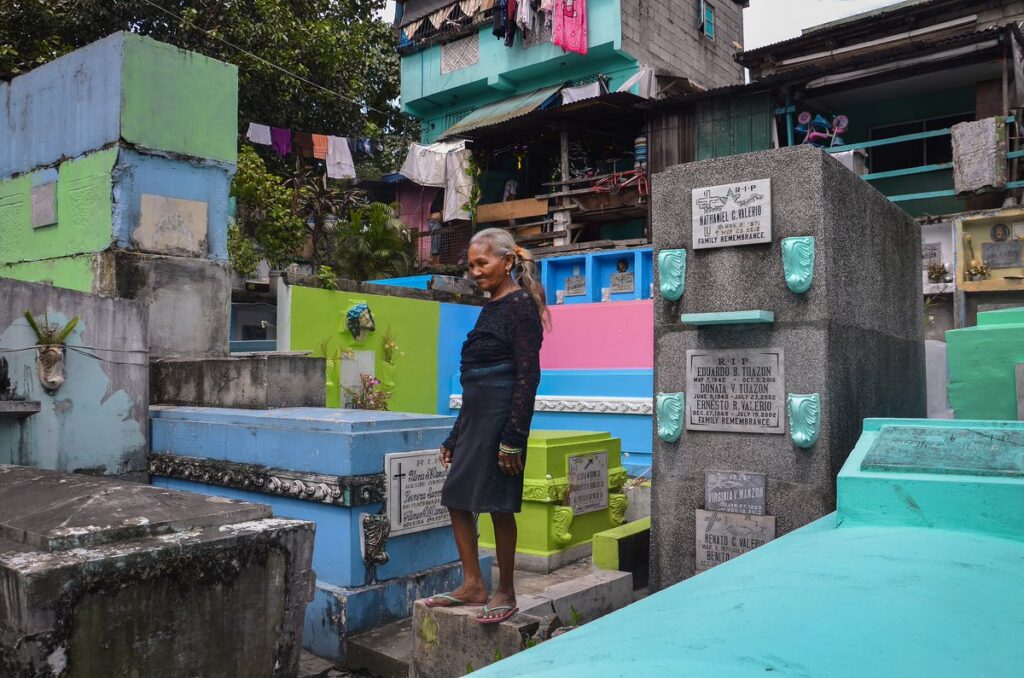
How the residents came to be in the cemetery in Manila
Many residents of the pogost have made arrangements with the owners of the family crypts, and for a small fee perform the duties of caretakers. They are not afraid of ghosts, and huddle under the vaults of tombs that protect the dead and the living from the heat of the tropical sun and monsoon rains. When the descendants of the buried come to commemorate their ancestors, the tenant-inspectors delicately go out for a walk under the canopy of palm trees.
According to Catholic custom, memorials are held on November 1, the Day of the Dead, which is preceded by Halloween, the mystical and hilarious All Saints’ Day. In the Philippines, these dates are declared public holidays, and the cemetery is especially busy.
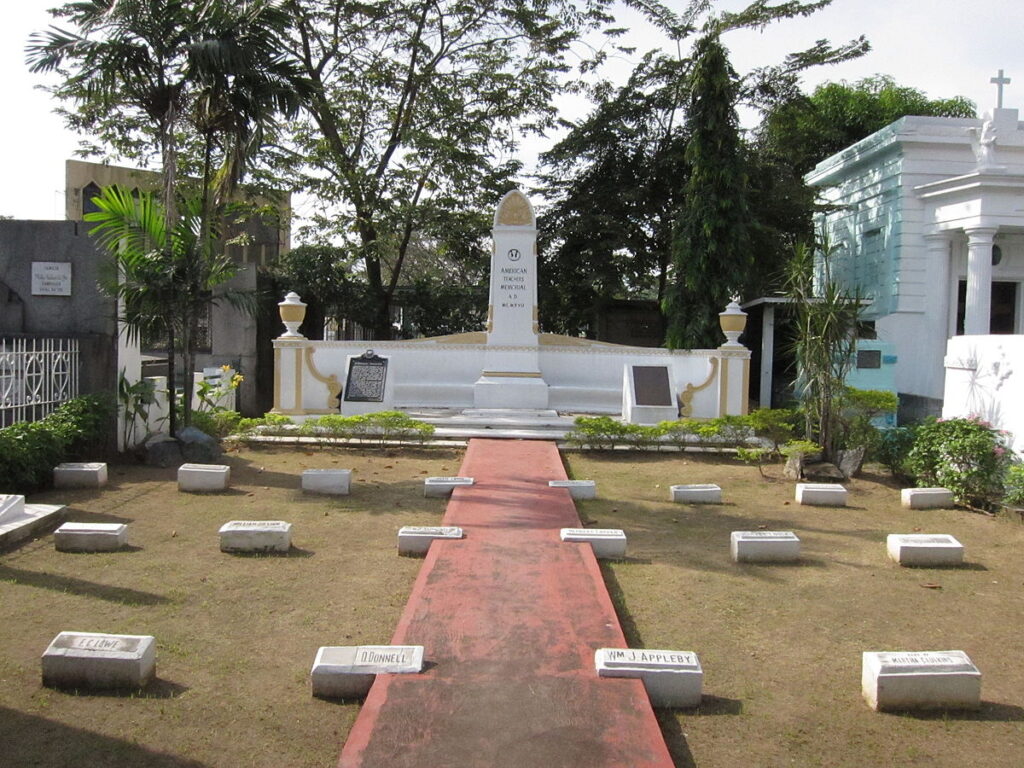
Famous memorials in the cemetery
Three presidents of the country are buried in the North Cemetery. The most famous of these politicians is Manuel Rojas, who has been at the state helm since the Philippines gained independence in July 1946. Streets in many cities of the archipelago’s islands are named after him.
Here lie the remains of prime ministers, senators, generals, popular actors, famous athletes. Crypts are built in the form of chapels, palace wings or medieval fortress donjons. The architects who erected these structures appealed to all styles of architecture, from the ancient classical and Gothic to Art Deco.
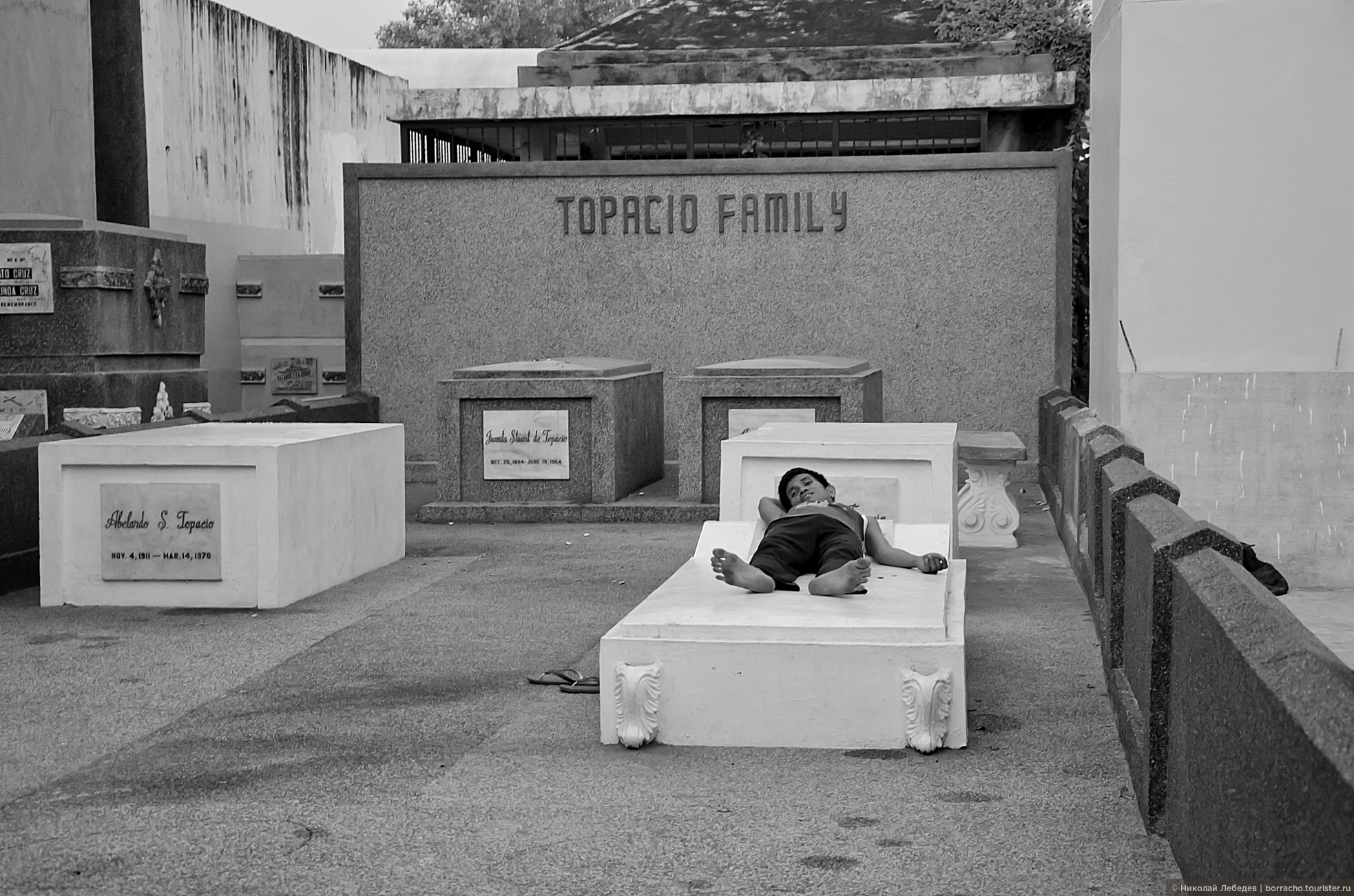
The memorials to the heroes of the Philippine Revolution of the 1890s and the soldiers who died during World War II attract attention.
Recently, the police have been conducting regular raids on cemeteries, detecting drug dealers, thieves, and other people connected with crime.



